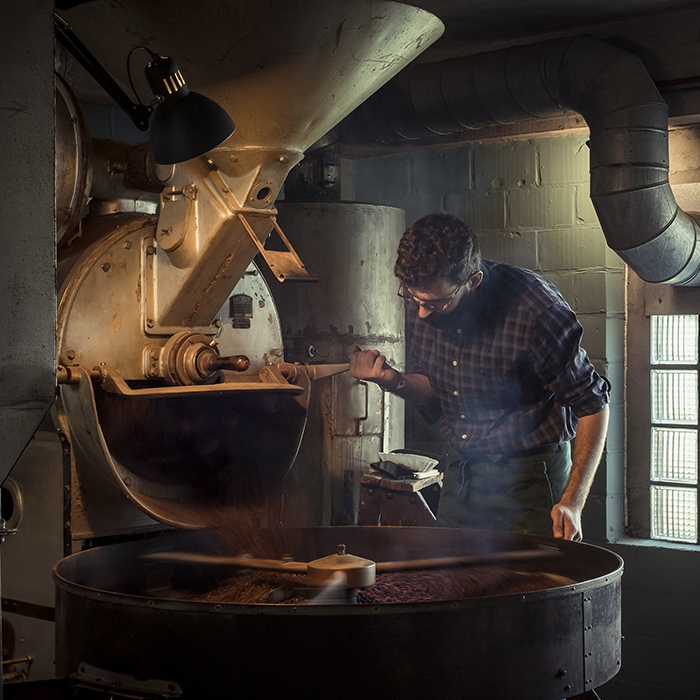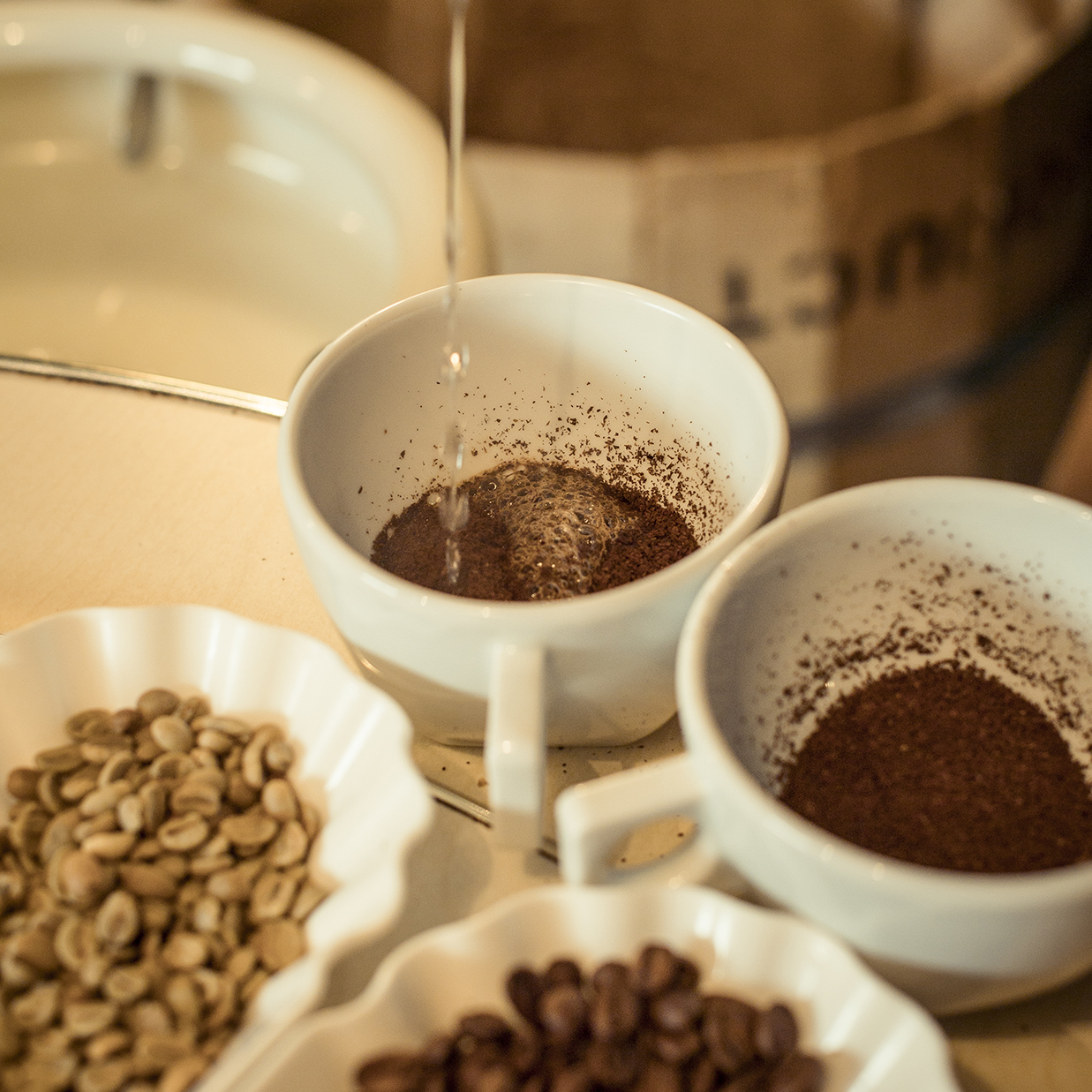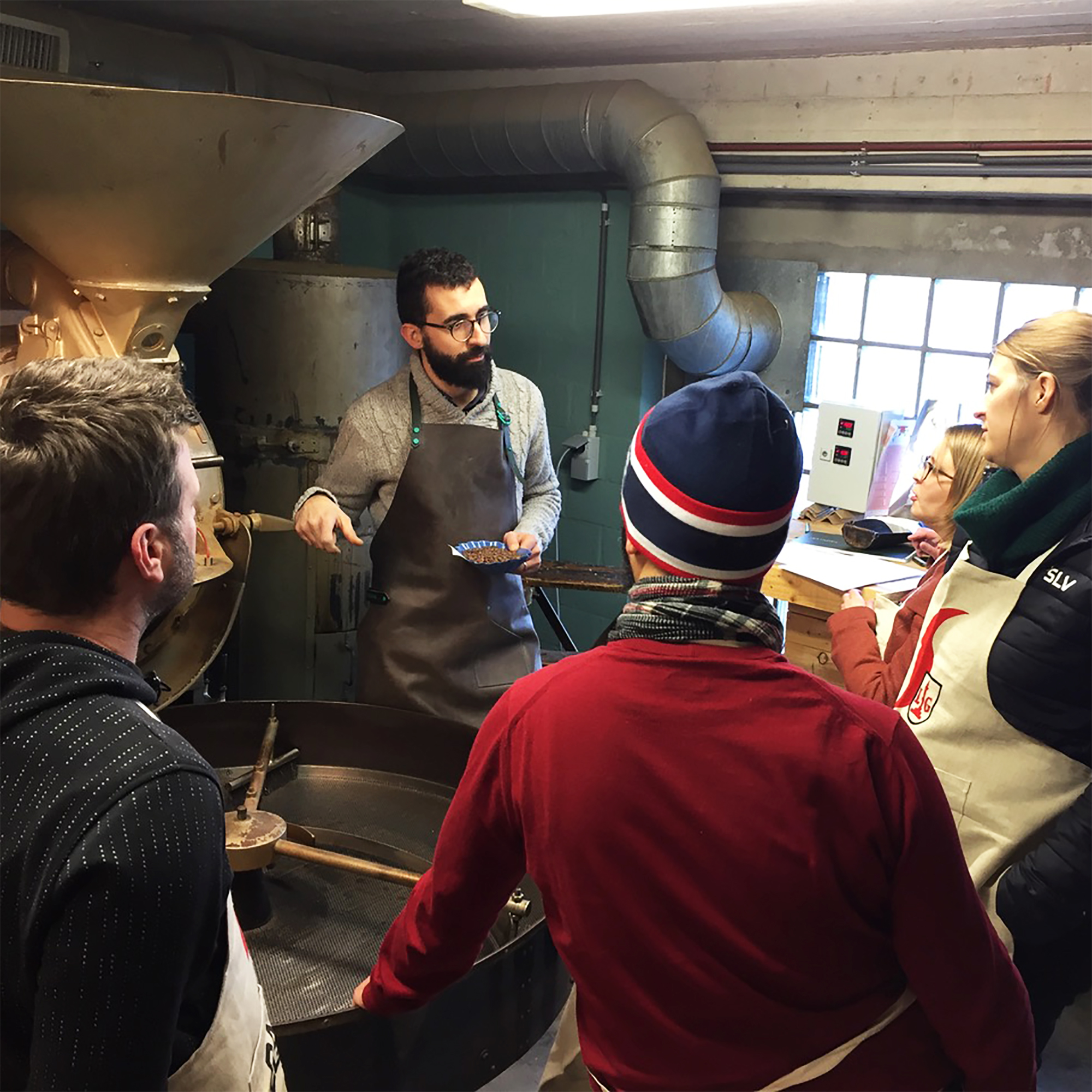Master coffee roasters
We are roasters, who are passionate about our craft. We have sharpened our senses and developed the know-how to roast beans just enough to enhance their aromas. To date, 850 aromatic compounds have been identified in coffee. At Charles Liégeois Roastery, we are enthusiastically working to reveal them in new selections and to combine them into new blends, to give you a generous-tasting coffee, every day.
Did you know?
To roast coffee, you have to know how to listen. At the first crack of the grain, which bursts during cooking, the flavours start to develop, the acidity decreases and the bitterness increases. At that point, it becomes a matter of carefully managing the time spent roasting. Because, if there is a second crack, it will be too late: the grain will be affected by pyrolysis (decomposition due to heat) and most of the aromas will be lost.


Tradition, reinvented
Being a Master Roaster means learning every day, observing, trying, making mistakes and trying again, all in order to develop new flavours and release balanced aromas. At Charles Liégeois Roastery, the magic happens in the Workshop. We then check the results during a “cupping” session, which is when the coffee is sampled. We find ideas are best shared over a cup of coffee.
For us, being a Master Coffee Roaster also means supporting our customers and employees in their coffee adventures, informing them about the taste, sight, smell, and feel specific to each coffee’s origin, teaching them to sharpen their senses, and showing them how to make the best cup of coffee.
Training
With ongoing staff training, tasting workshops, conferences, and barista training, the art of coffee, and its roasting, is a living discipline that is rooted in tradition, but which also calls for innovation. A real culture that brings knowledge and know-how to the fore.

A few words about coffee
Arabica: This coffee variety makes up about 60% of world production (2018) and is grown between 800 and 2000 meters above sea level. Low in caffeine, it is appreciated for its delicate taste and its great aromatic qualities.
Robusta: It generally grows in lowland areas, and is mainly cultivated in West Africa and South-east Asia. Twice as loaded with caffeine as arabica, it makes for a powerful and full-bodied coffee. Mixed with arabica, it brings out all its intensity.
Barista: A term of Italian origin, a barista is the person behind a counter serving both coffees and other drinks. The barista is a specialist, something of a "coffee sommelier”, who has acquired a high level of skill in the preparation of coffee-based drinks.
Blend: A mix of coffees from various origins combined to develop aromatic notes and specific characteristics (subtlety, strength, etc.).
Washed coffee (wet method): The coffee cherries, after manual harvesting, are pulped by machine. The pulper makes it possible to remove the majority of the outer skin before the grains are left in a fermentation tank for a short period of time (3 days maximum). The beans are washed again to remove the remaining pulp, then left to dry. This “wet” method produces a coffee with good acidity.
Natural coffee (dry method): After being harvested by hand, the coffee cherries are spread out in the open air for at least 10 days, during which they will dry and ferment. They are then shelled, in order to get to the green coffee bean. This “dry” method produces a coffee with pronounced fruity notes.